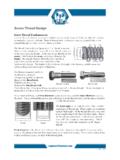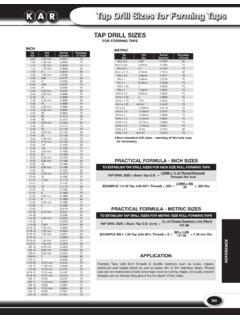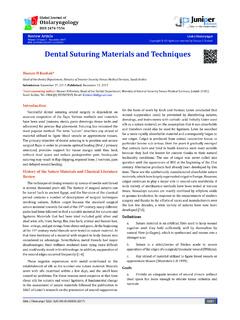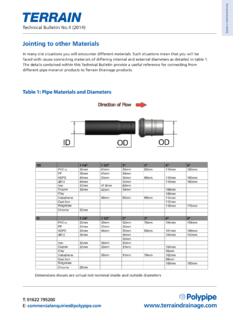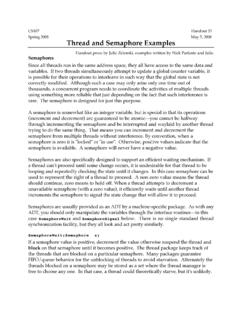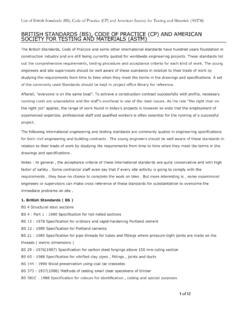Transcription of Properties of Fibers and Fabrics - Materials Education
1 1 Properties of Fibers and Fabrics Luke Ferguson, Materials Education Associates Seattle, WA Copyright: Edmonds Community College 2009 Abstract This experiment tests the strength of threads, string and yarn made from different Materials and then looks at the Properties of Fabrics made from these Materials . In Part I, the breaking strength is measured using a simple experimental setup. This gives students a reference point for applications of different Fibers in everyday use. In part II, the Properties of Fabrics are judged by the amount of static electricity that they can hold in dry and wet conditions. This provides students with a better understanding of the Fabrics they encounter daily, the Materials from which they are made, and an idea of their relative strengths.
2 Each part of this module may be done independently if desired. Module Objective To help students understand the role of Fibers in our society, including why different Fibers are chosen for different applications, why fiber Properties vary under different conditions (wet vs. dry, knotted vs. straight), and how natural and synthetic Fibers compare. Part II considers Properties that are related to the comfort of different Fabrics made from Fibers . Student Learning Objectives: Students will be able to Describe property differences between natural and synthetic Fibers Demonstrate that knots reduce the strength of fiber bundles. Show that some Fibers have better and some have worse Properties when wet Consider usage of Fibers in actual applications based on property measurements Consider the importance of fiber Properties in comfort when Fibers are made into fabric MatEd Core Competencies Covered Prepare tests and analyze data Apply basic concepts of mechanics Identify the general nature of Fibers and Fabrics Explain causes for differing Materials Properties Demonstrate the planning and execution of Materials experiments Explain effects of processing and manufacturing variations on material 2properties Key Words: Fibers , strength, flaws, Fabrics Type of Module: Lab experiments Time required: Part I.
3 One class period for lab, analysis and discussion Part II: One class period for lab, analysis and discussion Pre-requisite Knowledge: none Target Grade Levels High school, college introductory undergraduate courses Table of Contents Abstract 1 Module objective and student learning objectives 1 MatEd course competencies covered 1 Module data 2 Part 1: Strength of Fibers 2 Equipment and supplies needed 2 Curriculum overview and instructor notes 3 Module procedures 5 Part 2: Use of Fibers in Clothing 6 Equipment and supplies needed 6 Curriculum overview and instructor notes 6 Module procedures 7 Supporting Materials .
4 Test machine (details on attachments 1 and 2) 7 Acknowledgments 7 References 8 Evaluation packet 8 Part I: Strength of Fibers Equipment and Supplies Needed Strength testing machine if no testing machine is available, please see the attachment for a simple testing machine that can be built by the instructor or by students as a special project. Yarns and Fibers of various types one useful set is listed below with mass/unit length information for each: 100% Cotton (size 10) = grams/ft.
5 100% Nylon (T26) = grams/ft. 100% Silk = grams/ft. 100% Wool = grams/ft 3 100% Rayon (floss) = grams/ft. 100% Rayon (40 wt.) = grams/ft. 100% Acrylic (4-ply) = grams/ft. 100% Acrylic (knit) = grams/ft. 100% Polyester = grams/ft. Curriculum Overview and Notes for Instructor Fibers and Fabrics are stronger than their weight-equivalent bulk Materials . Why? Some observations about Fibers can help answer questions, For example, 1.) Fused silica Fibers have strength as high as 2M psi. 2.) Flaws (or defects) in Fibers result in stress concentration at the defect. Cracks initiate and propagate where stress is concentrated. 3.) Tensile strength increases with decrease in diameter. This is because the probability of finding a critical flaw or defect in the material decreases with decreases in diameter and length.
6 Most synthetic fabric is processed (stretched) to obtain molecular orientation and varying amounts of crystallization, which greatly strengthens the fabric. In this module, we will test threads, string, and yarn made from different Materials for tensile strength by measuring the force required to break the material with a spring-loaded scale. In order to make a meaningful comparison we will have to compensate for the fact that the various strings and threads have different diameters or densities. Fibers (and particularly organic Fibers ) are commonly porous or hollow, and threads and strands are made from bundles of Fibers . This makes it very hard to accurately measure the cross-sectional area of a small thread , and therefore to compute the absolute engineering strain or strength of a fabric.
7 One way to get around this problem is to measure the force to break the Fibers , and then to divide by the mass (weight) of a unit length of fiber. This gives a useful measure of the relative strength for a given mass of material . The mass/unit length information for the particular fiber samples proposed for use in this activity is given above in the listing of needed Materials . (The denier or linear density is a common unit in the textile industry and refers to the number of grams per 9000 meters of thread or fiber). A sample of the experimentally obtained breaking force and calculated breaking force to mass ratio for some Materials are given in the table below. material Mass/unit length Force to Break Breaking Force/Mass Dry cotton g/ft.
8 10 lbs. 208 lbs/(g/ft.) 4 Wet cotton 9 188 Cotton + knot 169 (broke at knot) 100% Silk 240 100% Nylon 638 100% Wool 37 Acrylic 4-ply 12 93 Acrylic yarn 134 Rayon floss 97 Rayon (40wt.) 129 Polyester 348 Notice that the acrylic yarn has the highest breaking force, about 12 lbs, however when the Breaking Force/Mass ratio is calculated then nylon and polyester appear to be much stronger even though the polyester thread broke at just lbs. Other important observations to make are that the cotton string becomes weaker after soaking in water, and the cotton string with a knot was significantly weaker than similar cotton strings without the knot. Finally, note that both the rayon and acrylic threads appear to be stronger when the overall cross-sectional area (or mass/unit length) is smaller.
9 This effect can be attributed to a decrease in the probability of finding a critical flaw or defect in a particular fiber bundle as the bulk or diameter of a thread is reduced. What sample has the highest breaking force? (The acrylic 4-ply yarn has the highest weight per unit length, and will probably require the most force to break.) What sample has the highest breaking force to mass ratio? (Nylon has a very high breaking force, and yet has a much lower mass per unit length than many of the other sample Materials . The breaking force to mass ratio for nylon should therefore be very high compared to most Materials .) Does a knot in a string or thread decrease the force that is required to break the material ? (The tensile stress, , on a fiber is measured by the force, F, divided by the area, A, of the fiber face such that =F/A.)
10 A knot is an example of an intentional defect that concentrates stress and breaking will tend to initiate at the knot with less applied tension or breaking force). How does water affect the breaking force for natural and synthetic Materials ? (Man-made or synthetic Materials will generally be less porous and will not absorb water as readily as natural Fabrics . Exposure to water may therefore 5have less noticeable effects on the synthetic Fabrics . Before the advent of synthetic Fabrics , silk was one of the strongest Fabrics that was available, and was used to make parachutes because of its high strength to weight ratio. Mountain climbing ropes are typically made of nylon, and should not have knots in them if possible. Ropes should also be reliable in wet weather and resistant to rotting, so that nylon synthetics appear to be a better choice that cotton or natural Materials .


